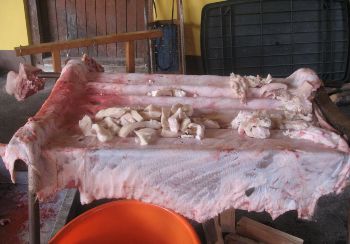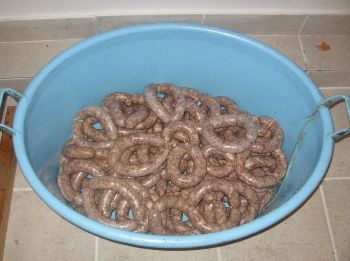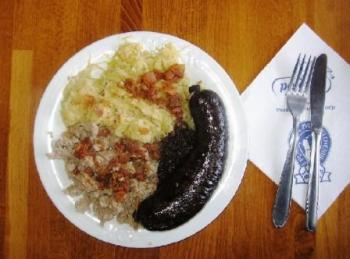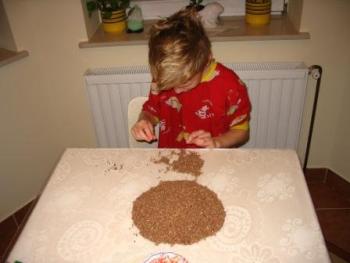|
 |
January |
| |
|
|
Koline - Pig slaughter |
|
Pig slaughter is a tradition
known in numerous European countries besides Slovenia. It
usually takes part in the winter, especially before the
Christmas to provide for the festive cuisine. In the past, this
was the only time of the year when people could afford to eat
larger amounts of meat. The slaughter is performed by a
professional butcher and accompanied by various local rituals.
The entire duration of the slaughter can be as long as three
days. Because people were traditionally stocking up on supplies
before winter, it became customary to slaughter more than one
pig, which increased the amount of time necessary for the meat
to be processed. Some families visit their relatives (often
grandparents) and friends at that time of the year, in order to
help. Also, little mechanization is used, with meat being cut
manually. Any grinding is done with relatively small
manually-operated, mechanical grinding machines.
In modern times, almost any family can afford to slaughter, yet
there is also an abundance of pre-processed meat in the shops,
so the traditional method of slaughtering is becoming more and
more of a folk custom rather than a pure necessity. |
 |
|
The slaughter requires numerous
preparations, including troughs, large quantities of boiling
water, large wooden barrels for storing meat, pots, sharp knives,
and in modern times also artificial intestines (hoses for
various sausages). Traditionally, the pig is slaughtered with a
knife and then put in a wooden or a metal trough and showered
with boiling water to remove the hair. The pig is then removed
from the trough and any remaining hair is removed with a knife
or a razor, and then it is again washed with boiling water.
The pig liver is customarily roasted the same day as well as the
fresh blood.
The meat can then be salted and stored in a cellar, to be taken
out after ten days, when the blood is squeezed out. The meat is
then stored again and left until May of the next year.
|
 |
|
The meat from the animal is then
processed further:
• The buttocks are salted and pressed in order to eventually
produce ham (šunka)
• The ribcage meat is salted and smoked in order to get bacon (slanina)
• The bulk of the meat is cut and ground to produce various
sausages, which are traditionally wrapped into the intestines of
various sizes.
• The bulk of the fat is cut into small pieces and stewed to
produce cracklings (ocvirki) |
 |
|
As the meat is stored for the
following months, we can enjoy blood sausages and frying
sausages till the beginning of spring while smoked meat and lard
can be enjoyed till next pig slaughter.
For blood sausages you need:
Intestines, fresh blood, meat from well cooked pig’s head, lard,
buckwheat groats, rice, salt, pepper, marjoram. |
 |
|